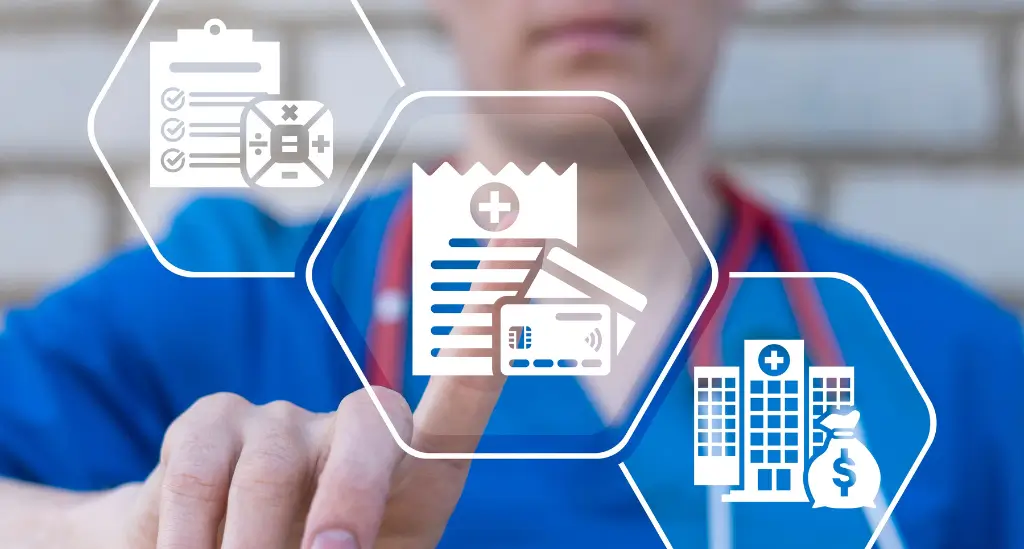You don’t need new software to comprehensively analyze 835 files—just better use of the tools and data you already have.
Hospitals, particularly rural and regional hospitals, are up against a long and growing list of challenges with insurance payers. Denials and underpayments are climbing, payments that do come are delayed, rules change constantly, and recoupments take back payments long after claims were approved. Insurers make it hard to reach a live person and are slow to resolve claims, while AI-driven denials add another layer of strain. All told, hospitals spend a staggering $40 billion annually on costs associated with billing and collections.
On top of that, many hospitals have limited visibility into their own internal issues. Process gaps, staff turnover, coding inconsistencies, and missed underpayments can all contribute to revenue loss, but they’re easy to overlook without the right data on payer behavior. Leaders may see isolated problems, yet not realize how much they add up.
Over time, payer tactics and hidden internal issues continue to drive up the hospital’s true cost to collect, often well beyond industry benchmarks of 2-4% of net patient revenue.
Why Existing Tools Fall Short
Hospitals already rely on clearinghouses, scrubbers, and contract variance tools. Each serves a purpose, but none goes far enough. Clearinghouses only reflect what payers choose to report back, missing underpayments and offering little insight into payer behavior. Contract variance tools flag individual discrepancies but don’t show systemic patterns. Scrubbers prevent some denials, yet they can’t keep pace with constantly changing payer rules. And aggregate data from state or association surveys is too broad to be actionable at the individual hospital level.
Hospitals are left with limited and fragmented information. It seems impossible to have a clear, full picture of how payers are treating your hospital, the impact it has on your processes, and what you can actually do about it.
A New Approach to Payer Visibility
What’s needed is a hospital-specific view of payer data and behavior. With that, you’ll go far beyond clearinghouse data and generalities, and will instead understand exactly how each payer affects your bottom line – and how you can push back effectively.
Even better, you likely already have everything you need to get started. We’ve found that most of this data can be surfaced through a deep, creative analysis of your 835 files, paired with internal data.
Here’s some of what we’ve been able to uncover:
Denials and Appeals
- Denial frequency by payer and service line: Not just how many denials you have, but which payers are targeting which departments (e.g., imaging, ED, outpatient surgery).
- Shifts in denial reasons: Detecting changes in payer rules or sudden spikes in AI-driven auto-denials, often before they become obvious to staff.
- Prior authorization denials quantified: Dollar value of revenue held up, average days delayed, and percent eventually overturned, payer by payer.
- Low-dollar denials in aggregate: The thousands of $20 or $50 denials that look trivial one by one but add up to six or seven figures annually.
- Resubmission cycles: How many times each payer makes you touch a claim before paying, converted into extra days in A/R.
Underpayments and Adjustments
- Systematic underpayments by code: Identifying when a payer consistently reimburses below contract for specific CPT/DRGs.
- Adjustment code patterns: Flagging recurring “catch-all” codes that mask underpayments or improper offsets.
- Bundling trends: Quantifying how often payers deny or reduce line items by bundling them into other services.
- Offsets and partial payments: Which payers apply unrelated balances against otherwise valid claims, how frequently it happens, and the total dollars lost as a result.
Timeliness and Cash Flow
- Payment speed by payer: Average and outlier days from approval to payment, compared against contractual obligations.
- A/R aging by payer: Which payers are consistently responsible for the longest-outstanding balances, how large those balances are, how they trend over time, and where they concentrate by service line.
- Takeback behavior: How often payments are clawed back, how long after the original payment, and which claim types are targeted.
Operational Burden
- First-pass yield by payer: Who pays correctly on the first submission versus who forces the most rework.
- Appeal success rates: How often denials are ultimately paid and how many staff touches it takes to get there.
- Service line vulnerability: Pinpointing departments where payer friction consumes the most staff time.
- Labor impact modeled: Tying denial, resubmission, and appeal volume back to staffing data to reveal the true cost-to-collect for each payer.
Any one of these insights can be valuable on its own; it’s the kind of detail RCM teams are often desperate to see. When brought into one place all together, they expose payer behavior in a way no dashboard or clearinghouse ever could.
The Result: A Hospital-Specific Payer Scorecard
When you pull these data points together, you can make more impactful decisions. Instead of scattered reports and anecdotal frustrations, leaders have a clear, data-backed picture of how each payer behaves – denials, underpayments, delays, takebacks, and the administrative drag that drives up cost-to-collect.
What can you do with that kind of visibility?
For one, it allows hospitals to shore up their own internal processes. When denial patterns are tied back to coding or workflow gaps inside the hospital, teams can fix root causes instead of fighting the same problems month after month.
It also creates leverage in negotiations. Instead of relying on anecdotes, hospitals can show exactly how payer behavior reduces effective reimbursement compared to contract terms (and compared to other payers). Numbers, not frustration, drive the conversation.
With a payer scorecard, leaders can also target resources more strategically. Staff can be focused where the data shows the most friction and the greatest revenue at risk.
The data can also build a broader case outside the hospital walls. Boards, community leaders, and even regulators can see in black and white how payer practices are eroding margins and threatening sustainability.
Finally, the scorecard makes it possible to track improvements over time. Leaders can see whether payer behavior shifts after interventions, whether internal fixes reduce denial rates, and whether the overall cost to collect is moving in the right direction.
Haven’t We Tried “Scorecards” Before?
Well, yes and no. The difference lies in what’s being measured, and who controls the data.
Industry Groups
Associations like the American Hospital Association have attempted payer scorecards, but these relied on national or state averages, uneven self-reported data, and missed hidden costs like FTE time and underpayments. Useful for lobbying, not for managing your hospital.
Vendors & Tech Platforms
Dashboards labeled “payer scorecards” are often just denial reports with a facelift. They don’t capture labor, vendor spend, or revenue leakage, and they can’t be maintained without outside support.
Consultants
Some firms deliver payer “report cards” as part of projects, but they’re snapshots built from partial data. Once the engagement ends, the scorecard goes stale.
What Makes This Different
A true hospital-owned scorecard is different: built on your data, across all cost drivers, and kept current for real leverage.
In short, a hospital-specific payer scorecard goes far beyond the standard dashboard of claims activity. It gives you a real-time accountability tool that tells you which payers are treating your hospital fairly, which aren’t, and what it’s costing you. This is the ideal starting point for exploring AI in revenue cycle management—an approach that builds directly on the data and systems hospitals already use.
Next Steps: Putting AI to Work
We’re finding that once hospitals gain true visibility into payer behavior, the next step is using that information to work smarter. Strategic AI use is becoming an important part of that shift—not as a silver bullet, but as a practical tool to cut down on repetitive work and improve efficiency.
Patient-Pay Automation
We’re training chatbots to handle routine inbound questions, freeing staff to focus on higher-value outbound conversations. The goal is to automate interactions that don’t require human judgment, while ensuring patients still get fast, accurate answers.
Insurance Follow-Up
The biggest drains on efficiency are follow-up and manual workflows. Insurance follow-up is highly repetitive and rules-driven—exactly the type of task that AI agents can reliably manage when guided by payer-specific logic. We’re helping our payer-scorecard clients implement AI to streamline follow-up and payment tracking, automatically flagging unpaid claims, spotting patterns in delays, and prompting staff when follow-up is required. This reduces manual monitoring and directs effort where it’s most needed.
Appeals and Low-Dollar Denials
AI is also making headway in appeals. We’re working with clients to generate draft appeal letters directly from denial codes and 835 text. These letters cite payer rules and CMS policy, giving staff a structured response they can quickly refine. The result is faster turnaround, reduced backlog, and more consistent appeals.
Beyond appeals, AI is beginning to handle the “death by a thousand cuts” denials that quietly consume staff time. Low-dollar denials, repetitive requests for attachments, and form submissions can be automated, preventing staff from burning hours on claims that add up to major losses only in aggregate.
Staying Ahead of Payers
Smart automation like this takes the burden of repetitive work off revenue cycle teams, freeing them to focus on higher-value tasks. With labor costs continuing to climb, and payer friction showing no sign of easing, these simple shifts are becoming more and more essential.
And as payers themselves lean harder on automation to deny and delay claims, hospitals will need their own automated defenses simply to keep pace.
Creating Your Own Payer Scorecard and AI Workflow
Every RCM team tracks denial rates, A/R days, clean claim rates, and net collections. Useful, yes—but those metrics don’t capture the full impact of payer behavior. A hospital-specific scorecard connects the dots, giving leaders the visibility they need to negotiate effectively, focus resources where they matter most, and protect margins.
And the best news is, most hospitals already have the data required to build a payer scorecard and start applying basic AI tools to ease the burden. With the right approach, it’s work you can do in-house, using systems you already rely on.
If you’d like help getting started, give our CEO, Mark, a call. He’ll walk you through the process, no strings attached, and share free resources to help you put it all in place.
And if you’d like to learn more about how rural hospitals can use their own data and existing tools to strengthen collections, uncover payer trends, and improve financial sustainability, request our full guide, “AI in Revenue Cycle Management: Practical Applications and Realistic Steps for Rural Hospitals and Health Systems.”










